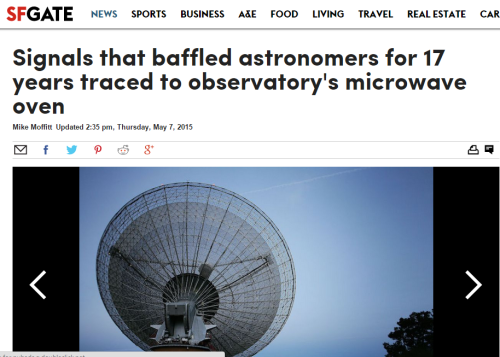Comet That Took A Century To Confirm Passes By Earth
Comet That Took a Century to Confirm Passes by Earth
NASA Goddard Space Flight Center logo. March 31, 2017 On April 1, 2017, comet 41P will pass closer than it normally does to Earth, giving observers with binoculars or a telescope a special viewing opportunity. Comet hunters in the Northern Hemisphere should look for it near the constellations Draco and Ursa Major, which the Big Dipper is part of. Whether a comet will put on a good show for observers is notoriously difficult to predict, but 41P has a history of outbursts, and put on quite a display in 1973. If the comet experiences similar outbursts this time, there’s a chance it could become bright enough to see with the naked eye. The comet is expected to reach perihelion, or its closest approach to the sun, on April 12.
Image above: In this image taken March 24, 2017, comet 41P/Tuttle-Giacobini-Kresák is shown moving through a field of faint galaxies in the bowl of the Big Dipper. On April 1, the comet will pass by Earth at a distance of about 13 million miles (0.14 astronomical units), or 55 times the distance from Earth to the moon; that is a much closer approach than usual for this Jupiter-family comet. Image Credits: image copyright Chris Schur, used with permission. Officially named 41P/Tuttle-Giacobini-Kresák to honor its three discoverers, the comet is being playfully called the April Fool’s Day comet on this pass. Discovery credit goes first to Horace Tuttle, who spotted the comet in 1858. According to the Cometography website, 41P was recognized at the time as a periodic comet — one that orbits the sun — but astronomers initially were uncertain how long the comet needed to make the trip. The comet was rediscovered in 1907 by Michael Giacobini but not immediately linked to the object seen in 1858. Later, the astronomer Andrew Crommelin determined that the two observations had been of the same object and predicted that the comet would return in 1928 and 1934, according to the Cometography entry for the comet. However, the object was not seen then and was considered lost. In 1951, L’ubor Kresák discovered it again and tied it to the earlier observations. A member of the Jupiter family of comets, 41P makes a trip around the sun every 5.4 years, coming relatively close to Earth on some of those trips. On this approach, the comet will pass our planet at a distance of about 13 million miles (0.14 astronomical units), or about 55 times the distance from Earth to the moon. This is the comet’s closest approach to Earth in more than 50 years and perhaps more than a century. For scientists, 41P’s visit is an opportunity to fill in details about the comet’s composition, coma and nucleus.
Image above: An artist’s illustration of a group of comet enthusiasts. Image Credits: NASA’s Goddard Space Flight Center. “An important aspect of Jupiter-family comets is that fewer of them have been studied, especially in terms of the composition of ices in their nuclei, compared with comets from the Oort cloud,” said Michael DiSanti of NASA’s Goddard Space Flight Center in Greenbelt, Maryland. He and his team will be observing 41P on April 1 using NASA’s Infrared Telescope Facility in Hawaii. Astronomers will try to determine characteristics such as how quickly 41P’s nucleus rotates, which provides clues about how structurally sound the nucleus is, and whether any changes can be documented in the coma and tail. Observers also will look for outbursts, which are an indication of how active a comet is. By cataloging the subtle, and sometimes not-so-subtle, differences among comets, researchers can construct a family tree and trace the history of how and where these objects formed as the solar system was taking shape. “Comets are remnants from the early solar system,” said DiSanti. “Each comet that comes into the neighborhood of Earth gives us a chance to add to our understanding of the events that led to the formation of our own planet.” Related links: Comets: http://www.nasa.gov/comets Goddard Space Flight Center: https://www.nasa.gov/centers/goddard/home/index.html Images (mentioned), Text, Credits: NASA’s Goddard Space Flight Center, by Elizabeth Zubritsky/Rob Garner. Greetings, Orbiter.ch Full article
More Posts from Fillthevoid-with-space and Others

In the ancient world (and, honestly, today too) there’s nothing spookier than the sky doing something weird. Auroras, meteors, comets, and eclipses all fell under the category of scary, prophetic bad omens, but don’t worry! In this podcast I explain what they are! There are also some opportunities to see these astronomical events in action coming up. The annual Perseid meteor shower reaches its peak August 11-13 and there will be a total eclipse of the Sun (or a partial eclipse, depending where you’re viewing it from) across North America on August 21, 2017.
Below the cut are sources, music credits, vocabulary list, and the transcript of this episode. Check out the glossary, it’s a big one! There are also some cool eclipse-viewing resources I’ll highlight so you can view this phenomenon safely.
Let me know what you think I should research by messaging me here, tweeting at me at @HDandtheVoid, or asking me to my face if you know me in real life. And please check out the podcast on iTunes, rate it or review it if you’d like, subscribe, and maybe tell your friends about it if you think they’d like to listen!
(My thoughts on the next episode were spectroscopy, probes through the ages, and the transit of Venus. Let me know by the 2nd and I’ll have the next podcast up on August 14th, barring any delays due to trip fatigue!)
Glossary
auroras - a light display that occurs when a magnetosphere is sufficiently disturbed by solar wind that charged particles scatter into the upper atmosphere and lose their energy.
comet - a small, icy body that orbits the Sun. When its orbit takes it close to the Sun, the comet warms up and releases gases and debris that produce a visible atmosphere, sometimes called the comet’s tail.
corona - the hot outer atmosphere of the Sun.
eclipse - when three celestial bodies line up so that one obstructs the visibility of the other two. A solar eclipse can be partial (only part of the Sun is obscured by the Moon), total (all of the Sun is hidden by the Moon), or annular ( the Moon is close to Earth and appears too small to completely cover the Sun completely).
Exeligmos cycle - a cycle that is 3 times the saros cycle, or 669 months. It is more accurate means of predicting eclipses and additionally predicts eclipses that will be visible from a location close to the initial eclipse.
Inex cycle - a cycle of 28 years and 345 days long used to predict an eclipse that’s visible in the opposite hemisphere. For example, if an eclipse happens in the Northern hemisphere, one Inex cycle later there will be an eclipse visible in the Southern hemisphere. The Inex cycle does not ensure that both kinds of eclipses will be of the same type.
meteor - a small rocky or metallic body in space, smaller than asteroids. Contact with the Earth’s atmosphere causes a meteor to burn up in a streak of light. Many meteors entering the atmosphere within a few minutes of each other is called a meteor shower. If a meteor impacts on Earth’s surface without burning up, it is then classified as a meteorite.
penumbra - a region where only a portion of the light source is obscured. When the light source is completely blocked, this darkest part of a shadow is called the umbra.
perihelion - an object’s closest approach to the Sun in its orbit. Its greatest distance from the Sun is called its aphelion.
perigee - a satellite’s closest approach to the Earth in its orbit. Its greatest distance from Earth is called its apogee.
radiant - the point in the sky where objects appear to come from. For example, the Perseid meteor shower appears to come from the constellation Perseus.
Saros cycle - a cycle of 223 months that is used to predict eclipses.
solar prominence - a large, bright feature anchored to the Sun's surface and extend outwards into the Sun's corona. A prominence forms in about a day out of plasma, a hot gas made of electrically charged hydrogen and helium. Stable prominences may last for several months, looping hundreds of thousands of miles into space as plasma flows along a structure of the Sun’s magnetic field that has burst outward, releasing the plasma.
syzygy - the straight-line alignment of three celestial bodies.
Script/Transcript
Sources
Perseids via EarthSky
Perseids via NASA
Meteor showers and viewing tips via StarDate
Comet Swift-Tuttle via NASA
My local library’s information and recommended reading list for learning about eclipses. Love you, Multnomah County!
Map of the Path of Totality across the United States
Solar eclipse map and calendar via the Exploratorium website
Free eclipse glasses at libraries via Lunar and Planetary Institute
Guide to making a pinhole camera to view the eclipse via NASA
Historical eclipses via NASA
Historical eclipses via Astronomy Magazine
“Even if the Moon, however, does sometimes cover the Sun entirely, the eclipse does not have duration or extension; but a kind of light is visible about the rim which keeps the shadow from being profound and absolute.”
Solar prominence via NASA
Solar flares via NASA
Fred Espenak’s guide to eclipses. He’s a former NASA astrophysicist who’s credited with all the eclipse predictions so I trust him.
Some good but confusing charts on solar eclipse Saros cycles via NASA
“Van den Bergh placed all 8,000 solar eclipses in von Oppolzer's Canon der Finsternisse (1887) into a large two-dimensional matrix. Each Saros series was arranged as a separate column containing every eclipse in chronological order. The individual Saros columns were then staggered so that the horizontal rows each corresponded to different Inex series.”
A Danish webpage on calculating eclipses
Hawks, Ellison. The Boy’s Book of Astronomy. Frederick A. Stokes Co: New York, 1914. Located in Google Books preview. (Heads up, this is a fairly racist source.)
Richard Cohen. Chasing the Sun. Random House: NY, 2010.
Robert A. Henning: “different forms, wavering, many colours diffusing and changing, sometimes far away, sometimes filling the heavens around and above, plunging great dropping spears and sheets of colour earthward towards your very head as though a great hand were dropping colour like burning oil” (43).
Ernest W. Hawkes: “whistling, crackling noise” (44).
Jeremy Belknap: “like running one’s thumb and forefinger down a silk scarf” (44).
Intro Music: ‘Better Times Will Come’ by No Luck Club off their album Prosperity
Filler Music: ‘Eclippse’ by Radical Face off his album Sunn Moonn Eclippse. Check out the video in the album link, it’s amazing.
Outro Music: ‘Fields of Russia’ by Mutefish off their album On Draught





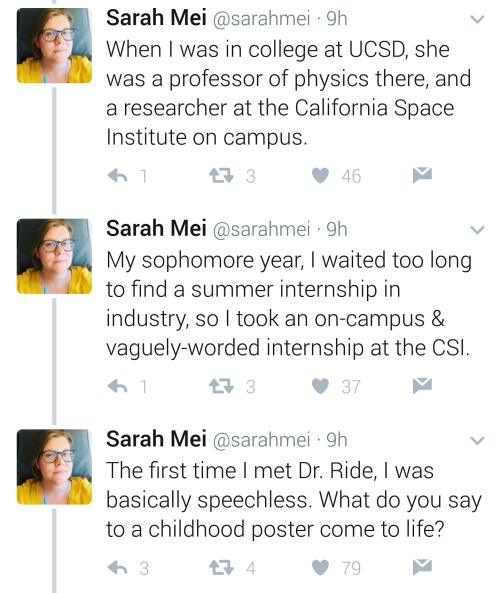
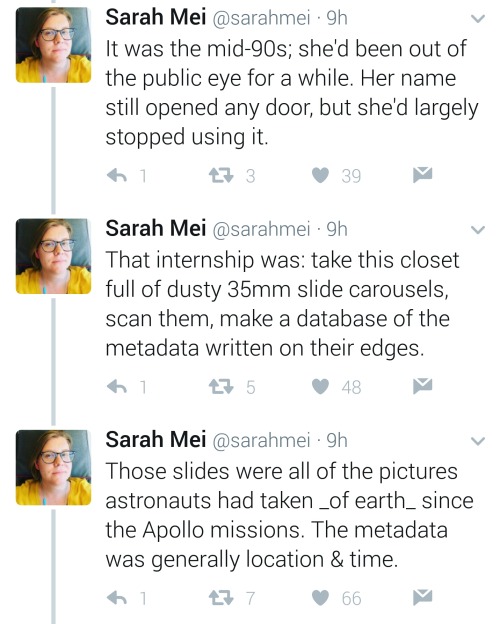
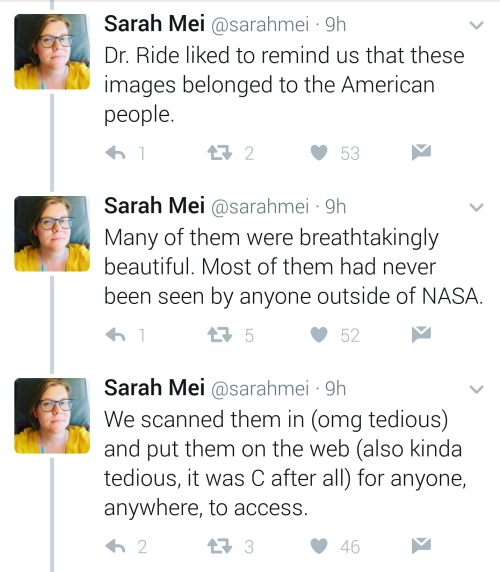
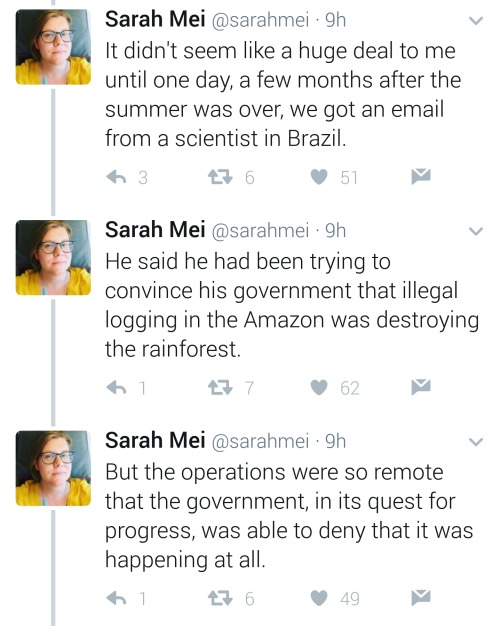
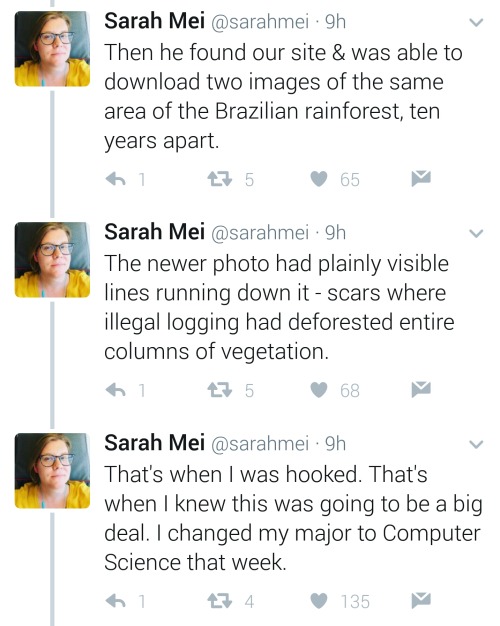
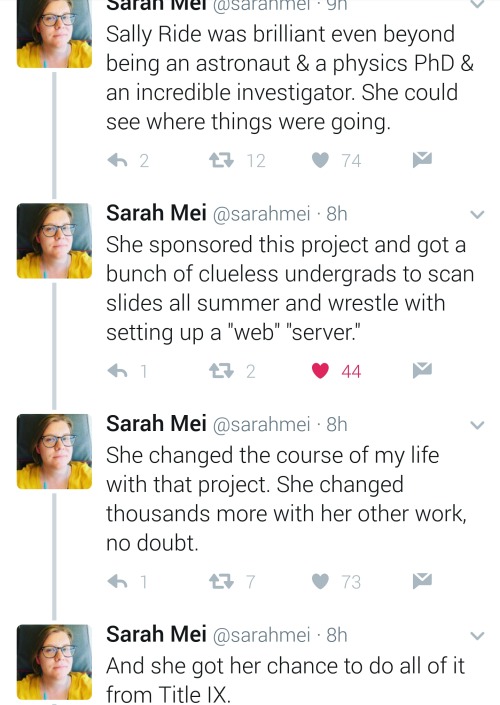
Equal opportunity benefits can be far-reaching
https://twitter.com/sarahmei/status/818682610712866817
What was the hardest part in training to go to space?
One of the most challenging parts of space training was learning how to use the space suit. We weigh over 400 pounds in the space suit, and since it is pressurized, each movement of your hands is like working against an exercise ball. Since the suit needs to be quite bulky in order to protect us from the environment of space (vacuum, radiation, micrometeoroids, extreme temperature) while doing a spacewalk, it makes body movements a bit awkward. Dexterity is quite compromised with the bulky gloves as well. Although it is challenging, however, it is likely also the most rewarding, because, well, you are in a SPACE SUIT!!! Hopefully I’ll get to do a spacewalk and look down on the our planet from above on a mission to the International Space Station in a few years.

Soyuz MS-10 experiences launch anomaly; crew aborts to safe landing.
One of Russia’s most reliable launchers experienced a rare, in-flight anomaly earlier this morning, forcing the two-man crew of Soyuz MS-10 to abort the mission.
Following a normal liftoff at 4:40am EST (2:40pm local time), a malfunction in the Soyuz FG rocket two minutes into the flight forced Expedition 57 crewmembers Alexey Ovchinin and Nick Hague to abort a manual abort profile. The anomaly occurred immediately following the separation of the rocket’s four strap-on boosters and jettisoning of the Launch Escape System. However, the protective fairing covering the spacecraft during flight through the thick atmosphere was still on, and solid rocket motors attached to the fairing pulled the crew capsule away from the failing booster. Following a ballistic trajectory through the upper atmosphere, the Soyuz’s Descent module separated from the Orbital Module and payload fairing and descended to a safe landing 20 kilometers east of Zezkezhan, Kazakhstan, 34 minutes after launch. Roscosmos reported that the crewmembers experienced around seven times the force of gravity, or 7G’s, during their abort.
Recovery forces reached the landing site immediately following touchdown. Both astronauts were reported to be in good health following their ordeal, and returned to their families at the Baikonur launch site around six hours after liftoff.

Recovery forces at the Soyuz MS-10 emergency landing site. Source: Ruptly.

Soyuz MS-10 crewmembers Alexey Ovchinin and Nick Hague embrace their families following their return to the Baikonur Cosmodrome after today’s launch mishap. Credit: NASA/Bill Ingalls. This marks the first crewed launch mishap of the International Space Station program, the first crewed launch mishap since the Challenger disaster in 1986, and the first crewed Soyuz launch malfunction since Soyuz T-10 in 1983.
That incident saw the two-man crew of Vladimir Titov and Gennady Strekalov abort away from their exploding rocket shortly before its scheduled liftoff time. While no cause of the mishap is currently known, Russian authorities have begun an investigation of the incident and have temporarily grounded all future Soyuz flights. The current three-member crew of Expedition 57 is slated to return to Earth December 13, followed by the launch of Expedition 58 December 20. Following today’s anomaly, it is unclear whether Expedition 57 will remain on orbit longer, or when the next crew will launch to the station. Expedition 57 is able to remain on orbit until early January, when their Soyuz reaches its certified orbital lifetime.

Expedition 57 commander Alexander Gerst captured this image of the Soyuz MS-10 launch from the International Space Station. The anomalous nature of the launch is evidenced by multiple points of light along the ascent path. Source: NASA. Watch NASA TV coverage of the Soyuz MS-10 launch below.
P/c: NASA.

Great detail of the famous crawler that transported the mighty Saturn V and all the space shuttles to the launch pads. An engineering feat in its own right.
Heads up, this is tomorrow night! I hope it's clear where I am to see it but considering I'm in the Pacific Northwest, I don't have super high hopes. Get a look if you can, though! Rare to see a blue moon that's actually red :)
A Total Lunar Eclipse is Coming: 10 Things to Know
If you were captivated by August’s total solar eclipse, there’s another sky show to look forward to on Jan. 31: a total lunar eclipse!

Below are 10 things to know about this astronomical event, including where to see it, why it turns the Moon into a deep red color and more…
1. First things first. What’s the difference between solar and lunar eclipses? We’ve got the quick and easy explanation in this video:
2. Location, location, location. What you see will depend on where you are. The total lunar eclipse will favor the western U.S., Alaska, Hawaii, and British Columbia on Jan. 31. Australia and the Pacific Ocean are also well placed to see a major portion of the eclipse, if not all of it.

3. Color play. So, why does the Moon turn red during a lunar eclipse? Here’s your answer:
4. Scientists, stand by. What science can be done during a lunar eclipse? Find out HERE.
5. Show and tell. What would Earth look like from the Moon during a lunar eclipse? See for yourself with this artist’s concept HERE.
6. Ask me anything. Mark your calendars to learn more about the Moon during our our Reddit AMA happening Monday, Jan. 29, from 3-4 pm EST/12-1 pm PST.

7. Social cues. Make sure to follow @NASAMoon and @LRO_NASA for all of the latest Moon news leading up to the eclipse and beyond.
8. Watch year-round. Can’t get enough of observing the Moon? Make a DIY Moon Phases Calendar and Calculator that will keep all of the dates and times for the year’s moon phases right at your fingertips HERE.

Then, jot down notes and record your own illustrations of the Moon with a Moon observation journal, available to download and print from moon.nasa.gov.
9. Lesson learned. For educators, pique your students’ curiosities about the lunar eclipse with this Teachable Moment HERE.
10. Coming attraction. There will be one more lunar eclipse this year on July 27, 2018. But you might need your passport—it will only be visible from central Africa and central Asia. The next lunar eclipse that can be seen all over the U.S. will be on Jan. 21, 2019. It won’t be a blue moon, but it will be a supermoon.
Make sure to follow us on Tumblr for your regular dose of space: http://nasa.tumblr.com.
-
 ca00-blog liked this · 8 years ago
ca00-blog liked this · 8 years ago -
 fillthevoid-with-space reblogged this · 8 years ago
fillthevoid-with-space reblogged this · 8 years ago -
 bibliophiliosaurus reblogged this · 8 years ago
bibliophiliosaurus reblogged this · 8 years ago -
 stenkish reblogged this · 8 years ago
stenkish reblogged this · 8 years ago -
 instantlycybertyrant liked this · 8 years ago
instantlycybertyrant liked this · 8 years ago -
 elric3087 liked this · 8 years ago
elric3087 liked this · 8 years ago -
 kinngg420 liked this · 8 years ago
kinngg420 liked this · 8 years ago -
 romantlcdemon reblogged this · 8 years ago
romantlcdemon reblogged this · 8 years ago -
 spacetimewithstuartgary reblogged this · 8 years ago
spacetimewithstuartgary reblogged this · 8 years ago -
 the-telescope-times liked this · 8 years ago
the-telescope-times liked this · 8 years ago -
 the-telescope-times reblogged this · 8 years ago
the-telescope-times reblogged this · 8 years ago -
 meteorologistaustenlonek reblogged this · 8 years ago
meteorologistaustenlonek reblogged this · 8 years ago -
 meteorologistaustenlonek liked this · 8 years ago
meteorologistaustenlonek liked this · 8 years ago -
 misterkrunch-blog liked this · 8 years ago
misterkrunch-blog liked this · 8 years ago -
 t-rexdescendant reblogged this · 8 years ago
t-rexdescendant reblogged this · 8 years ago -
 t-rexdescendant liked this · 8 years ago
t-rexdescendant liked this · 8 years ago -
 girlygamernoob2015 reblogged this · 8 years ago
girlygamernoob2015 reblogged this · 8 years ago -
 girlygamernoob2015 liked this · 8 years ago
girlygamernoob2015 liked this · 8 years ago -
 garlic-flower liked this · 8 years ago
garlic-flower liked this · 8 years ago -
 too-easily-obsessed liked this · 8 years ago
too-easily-obsessed liked this · 8 years ago -
 illbeelovelyy liked this · 8 years ago
illbeelovelyy liked this · 8 years ago -
 howstrangethemusicsoundstome reblogged this · 8 years ago
howstrangethemusicsoundstome reblogged this · 8 years ago -
 howstrangethemusicsoundstome liked this · 8 years ago
howstrangethemusicsoundstome liked this · 8 years ago -
 itsjustalex2295 liked this · 8 years ago
itsjustalex2295 liked this · 8 years ago -
 seaeclectic liked this · 8 years ago
seaeclectic liked this · 8 years ago -
 andromeda1023 reblogged this · 8 years ago
andromeda1023 reblogged this · 8 years ago -
 andromeda1023 liked this · 8 years ago
andromeda1023 liked this · 8 years ago -
 ricksawz liked this · 8 years ago
ricksawz liked this · 8 years ago -
 grannypenwith liked this · 8 years ago
grannypenwith liked this · 8 years ago -
 waningyouth reblogged this · 8 years ago
waningyouth reblogged this · 8 years ago -
 waningyouth liked this · 8 years ago
waningyouth liked this · 8 years ago -
 elsoldeestephanie reblogged this · 8 years ago
elsoldeestephanie reblogged this · 8 years ago -
 misslittlepeach liked this · 8 years ago
misslittlepeach liked this · 8 years ago -
 elsoldeestephanie liked this · 8 years ago
elsoldeestephanie liked this · 8 years ago -
 rose-planet reblogged this · 8 years ago
rose-planet reblogged this · 8 years ago -
 rose-planet liked this · 8 years ago
rose-planet liked this · 8 years ago -
 mileypercocet reblogged this · 8 years ago
mileypercocet reblogged this · 8 years ago -
 mileypercocet liked this · 8 years ago
mileypercocet liked this · 8 years ago -
 notclevr liked this · 8 years ago
notclevr liked this · 8 years ago -
 ariverderce reblogged this · 8 years ago
ariverderce reblogged this · 8 years ago
A podcast project to fill the space in my heart and my time that used to be filled with academic research. In 2018, that space gets filled with... MORE SPACE! Cheerfully researched, painstakingly edited, informal as hell, definitely worth everyone's time.
243 posts


